
The first time I had Amarone wine, I had no idea what to expect. A friend handed me a glass and simply said, “This is something special.” And they were right—Amarone is unlike any other wine I’ve tried.
Amarone Della Valpolicella wine is a luxurious red wine that’s rich, bold, and full of flavor. What makes this wine stand out is its unique production process, where grapes are partially dried before fermentation, concentrating the flavors and giving the wine its signature intensity.
Did you know The name “Amarone” literally means “the great bitter?” The name was chosen to distinguish it from the sweet Recioto della Valpolicella wine that uses the same grape. The name, Amarone, might be misleading as the wine isn’t actually bitter, but we’ll get into that later.
If you’re curious about what makes Amarone Classico one of Italy’s most celebrated wines, you’re in luck! This guide will walk you through everything you need to know, including, Amarone wine price, tasting notes and storage recommendations.
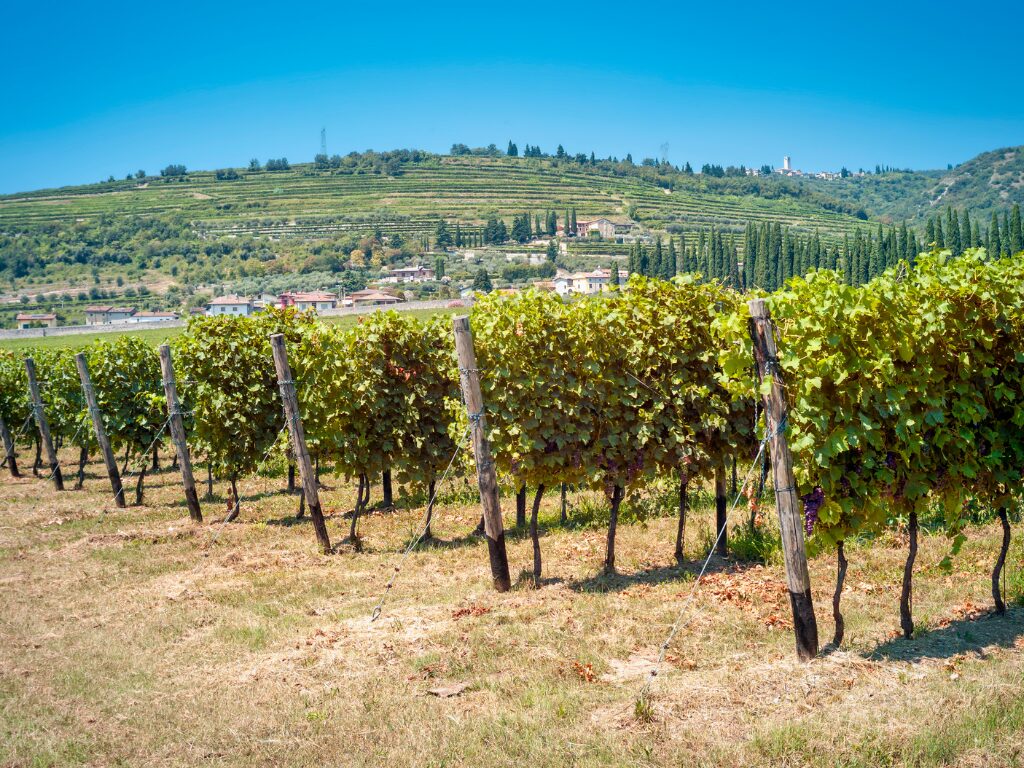
What is Amarone Wine?
Amarone red wine is a famous Italian red wine known for its rich, full-bodied flavor and high alcohol content. It’s made from partially dried grapes, which gives it concentrated, bold flavors that make it stand out.
Amarone is classified as a DOCG wine, which means it follows production rules, and meets the highest quality standards of Italian Wines. The wine is often dry, with deep notes of dried fruits and spices.
Grape Amarone comes from Valpolicella, also known as Amarone wine region in the Veneto region of northeastern Italy. This Amarone region is known for its rolling hills and rich wine history. The name Valpolicella itself comes from Latin, meaning “valley of many cellars,” which reflects the region’s deep connection to winemaking.
Origin of Amarone della Valpolicella Wine
Amarone della Valpolicella Classico wine is actually a fairly recent creation, with the first bottle of wine produced in the 1930s. The story goes that Amarone happened by accident when a winemaker in the Valpolicella region let sweet Recioto wine ferment too long, turning it from sweet to dry.
What started as a mistake became one of Italy’s most loved red wines, known for its bold, rich flavors. Today, Amarone Italy is made with the appassimento method, where grapes are dried before fermentation.
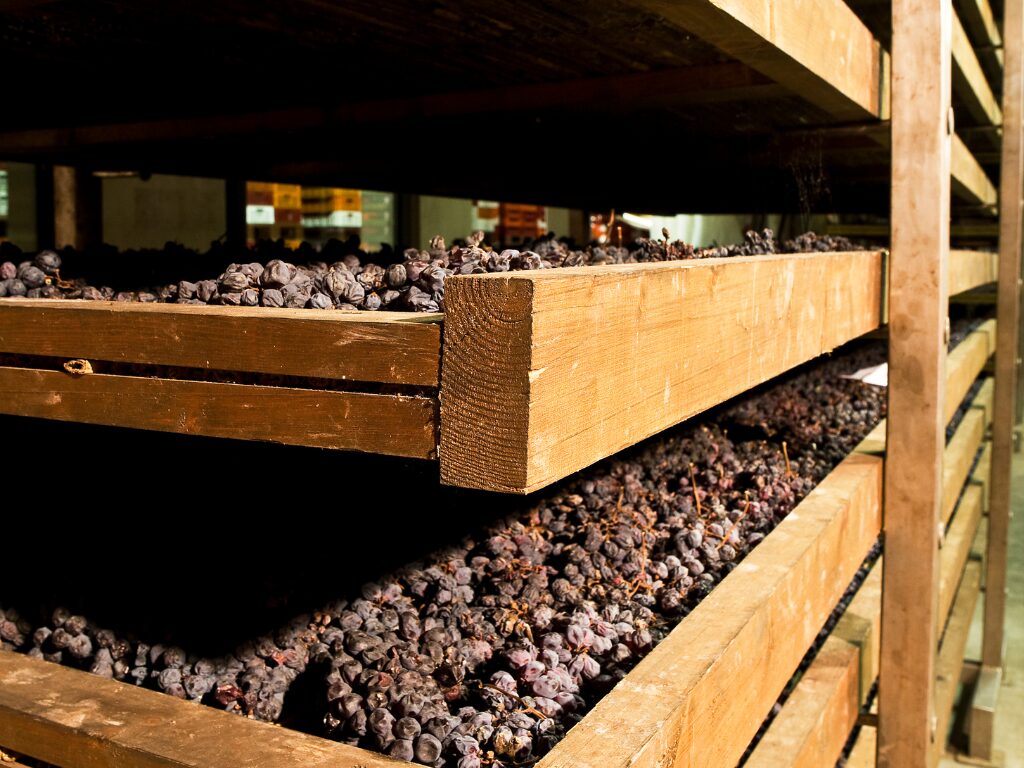
How is Amarone Wine Made?
Italian wine, Amarone, is made from a blend of grape varieties, with Corvina being the primary Amarone grape variety. Corvinone is another important grape, often used as a substitute or complement to Corvina, as it brings more structure to the wine.
Rondinella is usually added to the blend for its fruitiness and good color. Sometimes, small amounts of other local varieties are included to enhance the flavor complexity.
Once the Amarone wine grapes are picked, they are laid out to dry for several months. This drying process, called appassimento, helps the grapes lose water and concentrate their sugars, flavors, and aromas.
After the appassimento process, the dried Amarone della Valpolicella grapes are slowly fermented to turn their concentrated sugars into alcohol. This fermentation can take a long time because of the grape’s high sugar content.
Once fermentation is complete, the wine is aged in oak barrels for two to five years. This helps soften the Valpolicella Amarone wine’s tannins and adds flavors like. As a result of this lengthy process, Amarone wine cost might be a bit more than other red wines, but it’s worth it.
Tasting Notes and Characteristics of Amarone Wine
Amarone has rich, bold flavors, often with notes of dried fruits like candied strawberries, cinnamon, cherry, cocoa, and black fig.
You’ll also taste hints of tobacco and brown sugar, along with deeper flavors of dark chocolate. This mix makes Amarone both fruity and slightly bitter-sweet, giving it a complex and memorable taste.
Amarone has a high alcohol content, typically around 15% to 16%, with a smooth, velvety texture that feels luxurious on the palate.
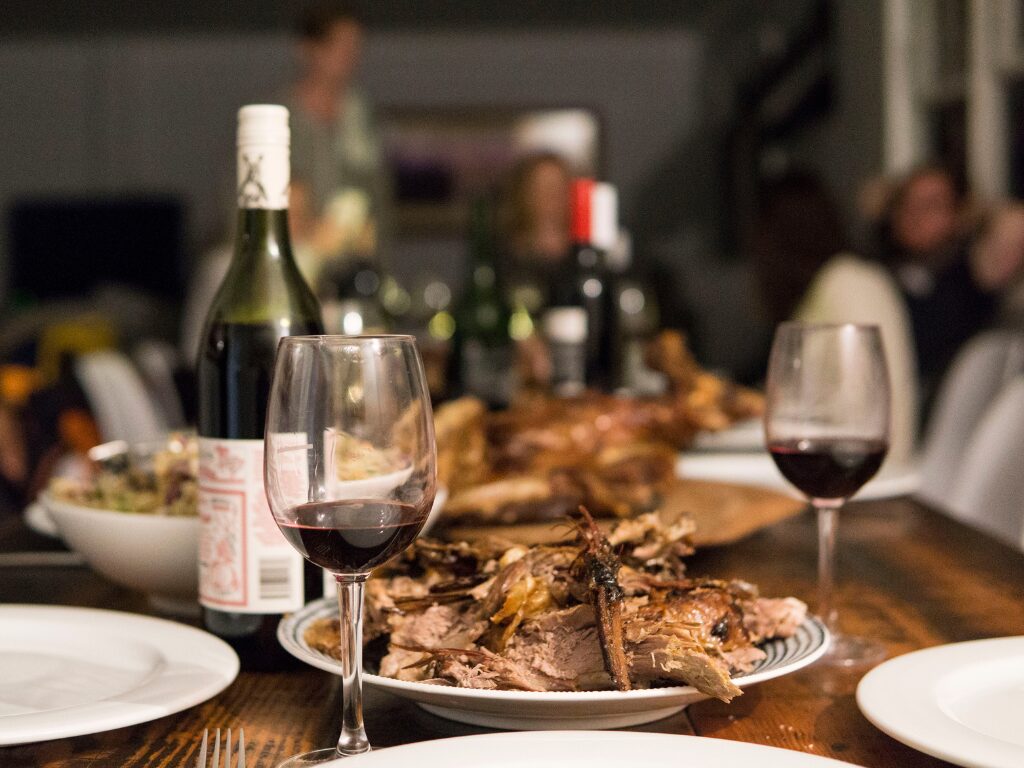
How to Pair Amarone Wine with Food
Amarone is a bold, rich wine, so it pairs best with dishes that can match its intensity. Look for foods that are savory, full of protein, and not too acidic, as this helps balance the wine’s power. Rich meats, hearty sauces, and umami-rich foods are ideal companions.
Because of its richness, Amarone works wonderfully with braised meats like lamb, beef, or venison. Dishes with truffles or aged cheeses, such as Parmigiano Reggiano, also complement its bold flavors.
For something more luxurious, try pairing it with dishes that include dark chocolate or a red wine sauce, as these flavors enhance Amarone’s natural depth.
Related: Best Wine for Italian Food – Your Complete Guide
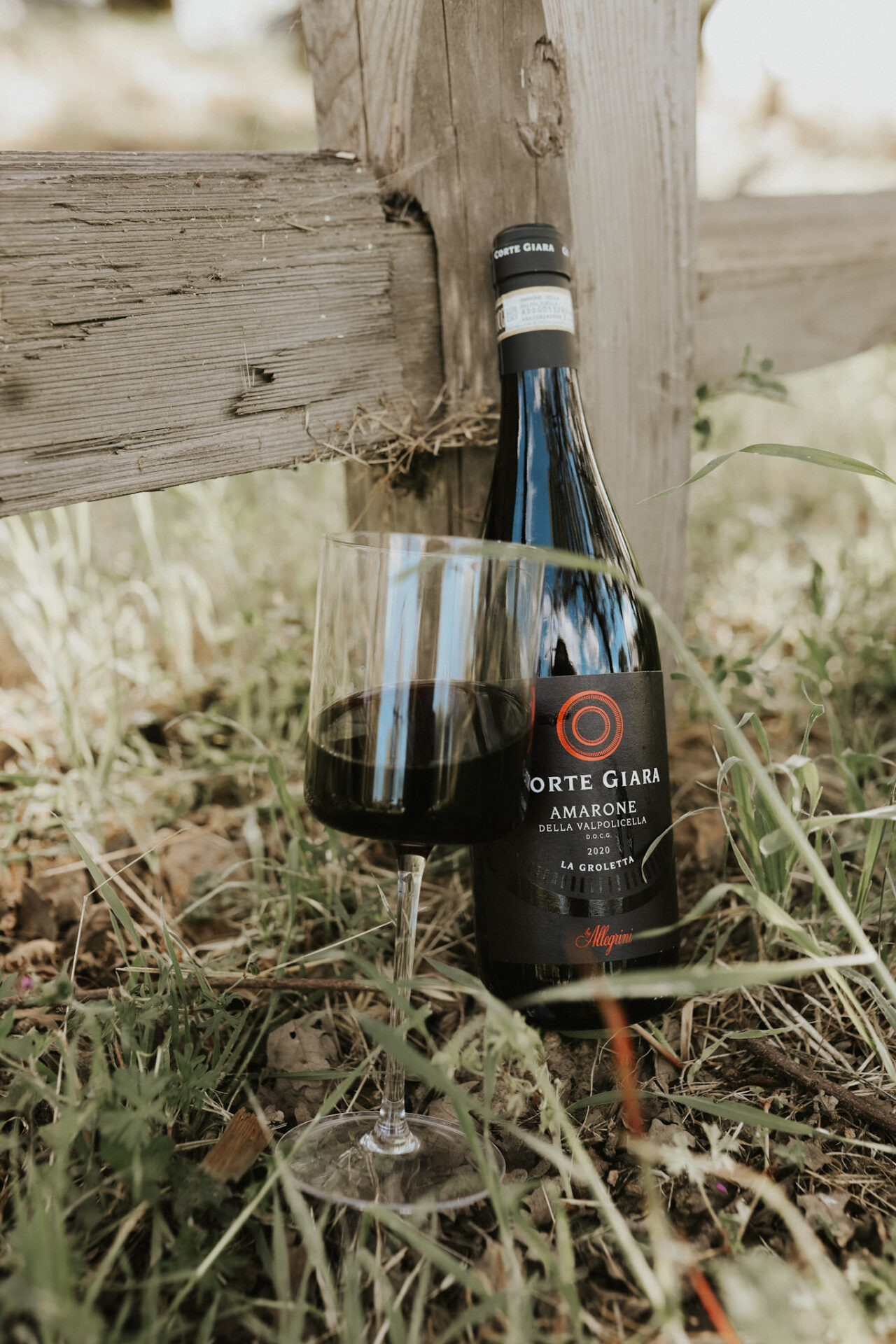
How to Choose and Buy Amarone Wine
Tips for selecting a good Amarone
- Look for the DOCG label, which guarantees the wine is of high quality.
- Check the producer’s reputation; well-known producers usually make better wines.
Amarone Della Valpolicella Wine Price
Amarone della Valp is usually expensive, and might cost about $40 and above. The wine is costly to produce because the grapes are picked by hand, to protect the grape skin from breaking. It is then dried before fermentation, which makes it all a labor and time-intensive process. This is reflected in the Amarone price tag.
However, Amarone della Valpolicella price usually depends on the producer, vintage, and how well the wine can age. Higher-end bottles can reach $100 or more due to the time and care needed to make them.
Serving and Storing Amarone Wine
- Amarone should be decanted for about 1 to 2 hours to help the wine open up and release its complex aromas.
- Use a large, wide glass like a Bordeaux-style glass to fully appreciate the wine’s rich flavors.
- The best serving temperature for Amarone is between 64°F and 68°F (18°C to 20°C); if it’s too warm or cold, it can affect the taste.
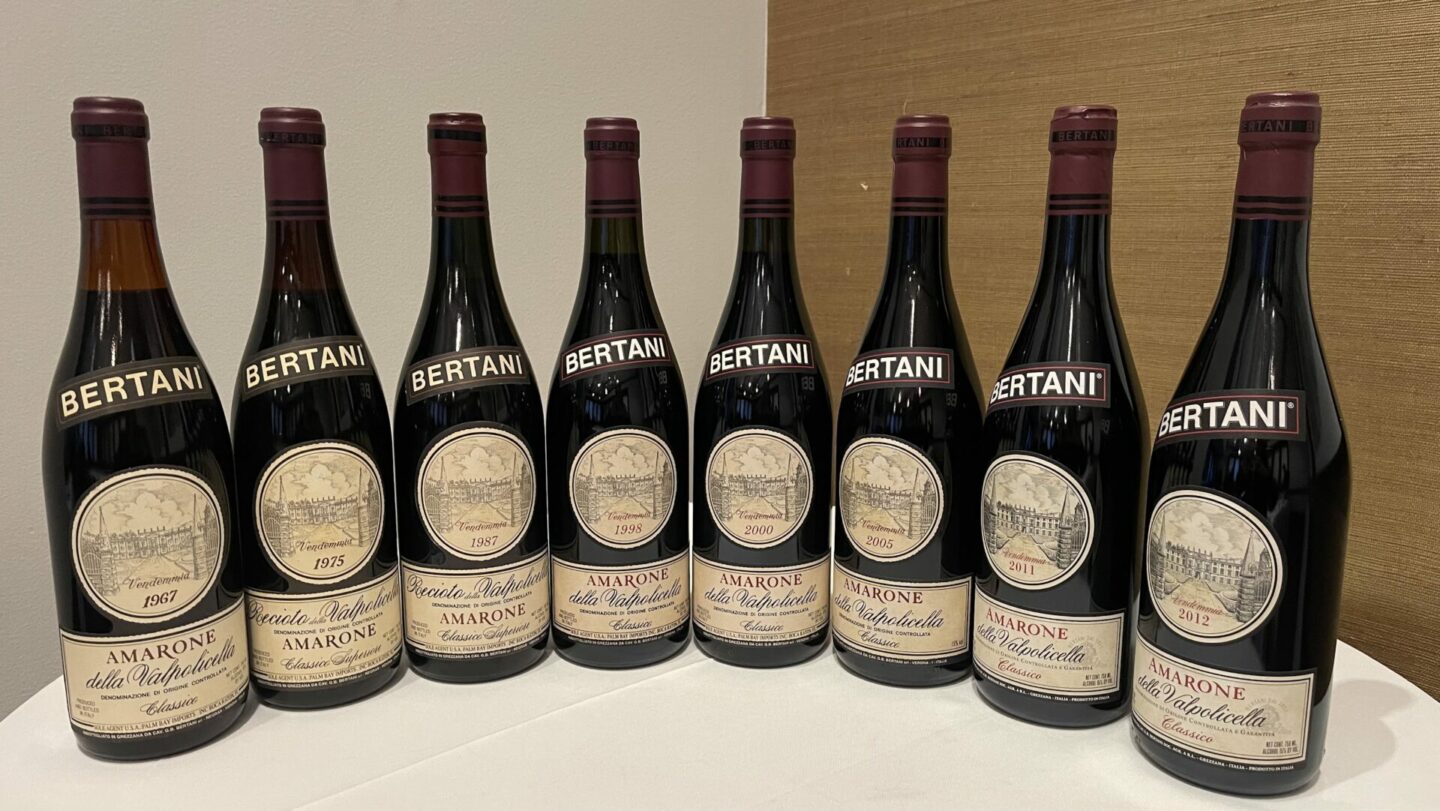
How to store Amarone for aging or immediate enjoyment
- If you’re storing Amarone for aging, keep it in a cool, dark place with a steady temperature, ideally around 55°F (13°C).
- Keep Amarone away from direct sunlight or vibrations while storing.
Amarone can be enjoyed young, but it’s best after aging for at least 5 to 10 years to allow its flavors to develop. High-quality Amarone can age for 20 years or more, improving with time as it gains more complex notes of dried fruit, leather, and spice. Be sure to check the vintage and producer for specific aging recommendations.
Conclusion
Amarone wine is one of Italy’s finest, with a perfect mix of rich flavors, a full body, and smooth elegance. The careful process of drying grapes and aging creates a bold yet refined wine, ideal for those who love deep, complex tastes.
You can enjoy it with hearty meals or even on its own, letting the flavors shine. Whether you’re trying it for the first time or a long-time fan, Amarone never disappoints.
Frequently Asked Questions
What makes Amarone special?
Amarone is special because it’s made from dried grapes, which makes the flavors more intense and rich. The appassimento process gives it deep notes of dried fruits, spices, and dark chocolate. It’s also full-bodied with higher alcohol content compared to some other red wines.
How long can you age Amarone wine?
You can age Amarone for many years, as it often gets better with time. High-quality bottles can be aged in barrels for 10 to 20 years, developing flavors like dried figs, tobacco, and leather. To help it age well, store it in a cool, dark place.
What foods pair well with Amarone wine?
Amarone goes well with rich dishes like braised meats, aged cheeses, and anything with truffles. Its bold flavors match perfectly with hearty foods. For dessert, it’s great with dark chocolate or strong cheeses like gorgonzola.
